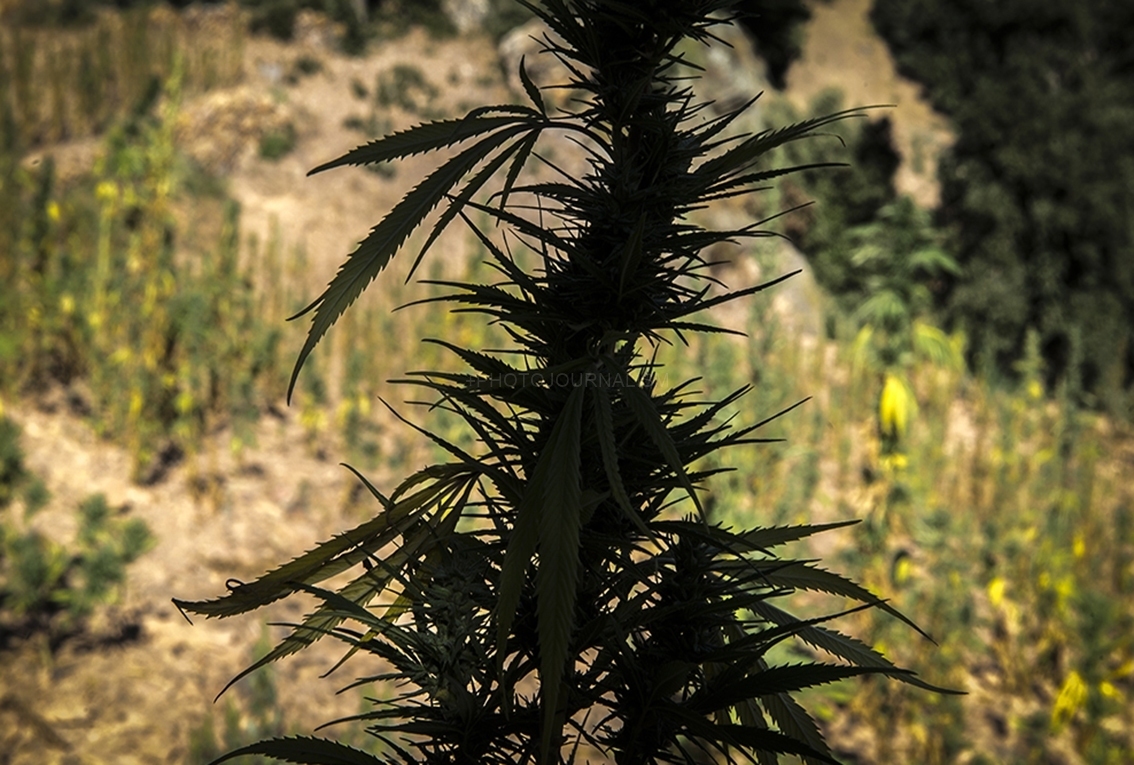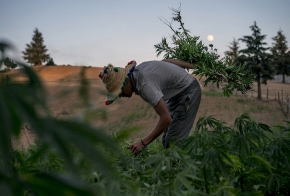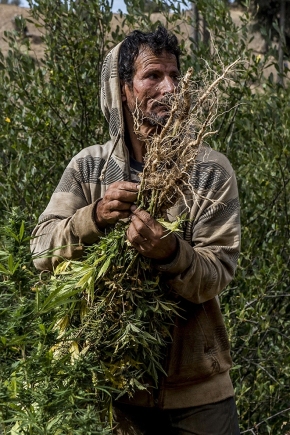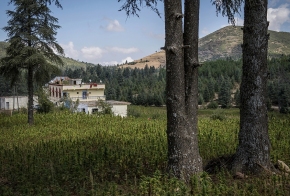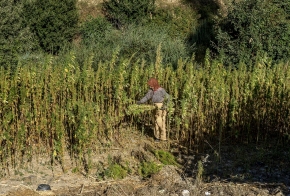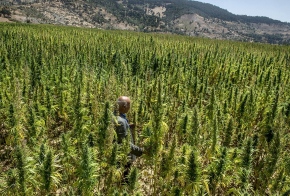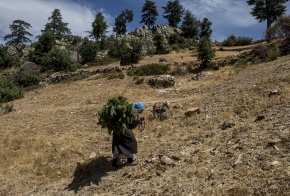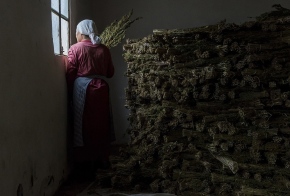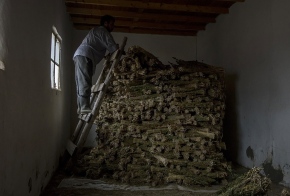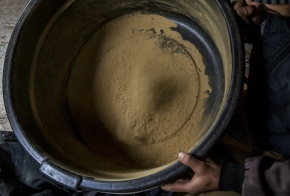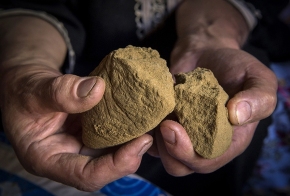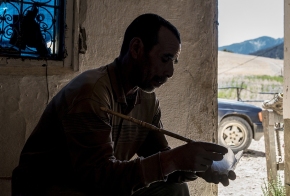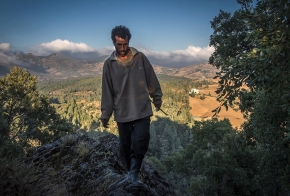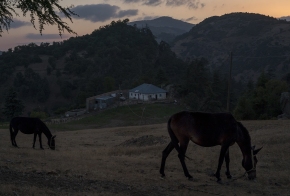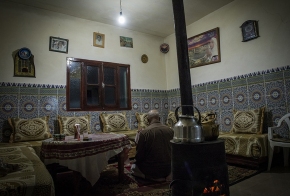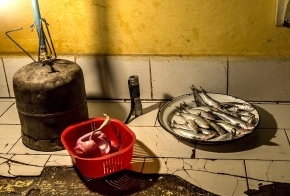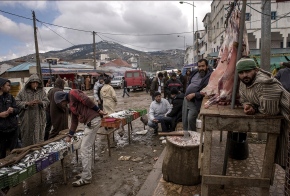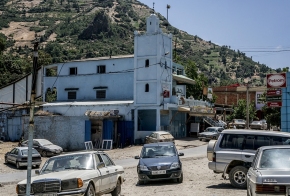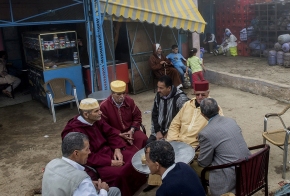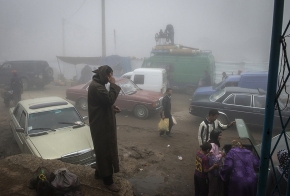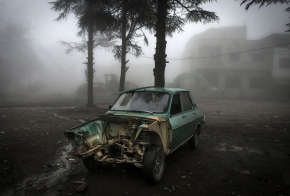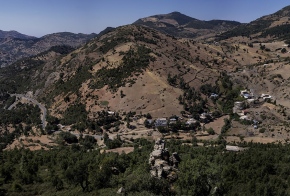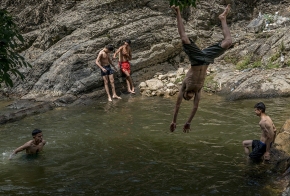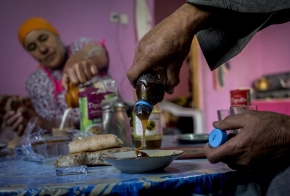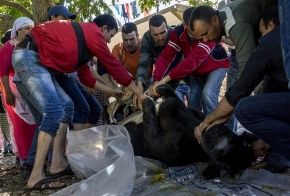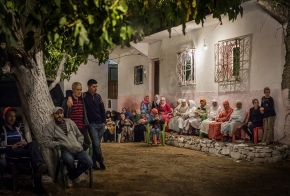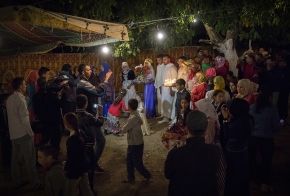QUEEN OF THE MOUNTAIN
As big money keeps pouring in from increasing hashish exports, the Ketama Valley fades away: mass deforestation, dried up aquifers, civil corruption, growing poverty. Four decades ago, this breathtaking alpine scenery at the heart of the Rif Mountains, North of Morocco, was still attracting European bohemia delighted with such a nearby destination of oriental flair, its friendly country folk and, sure, cannabis indica, an ancient crop in this altitudes also know among locals as “the queen of the mountain”*. In those days, hashish making was still unknown here. Plantations were modest, strictly meant to sustain the simple lives of villages and towns by selling kif, the blend of hemp and tobacco widely smoked in pipe across North-Africa. Nobody around would have even considered then cutting down the sacred cedar forests in order to turn valleys into huge solariums, as it happens to be nowadays. But the hashish irruption in the seventies brought along the need of huge plantations on sunny slopes, plus the more water as possible from rivers and springs. As this thriving industry expands steady across the landscape, so does misery among traditional lives.
*It is estimated that the cannabis indica has been growing in the Rif Mountains even before the Islamization. In 1956 a special permit to plant hemp was granted by Sultan Mohammed V to seven Kabilas, or tribes, of the Ketama Valley in exchange for peace. The making of hashish, the profitable resin paste, was introduced in the area in the late sixties by Western travelers arriving from Asia. One kilo of hashish requires near hundred kilos of plant. Morocco currently exports about 50,000 thousand tons of hashish every year.
